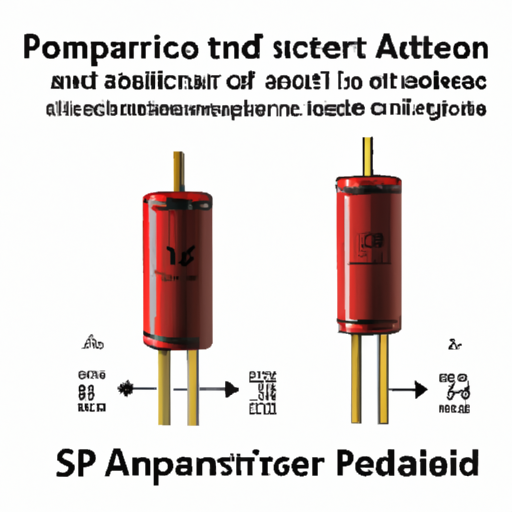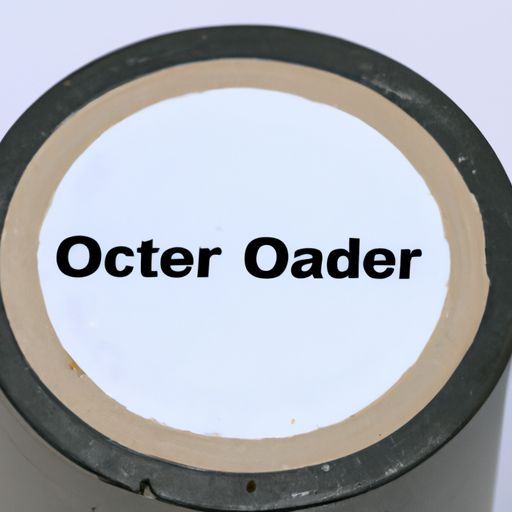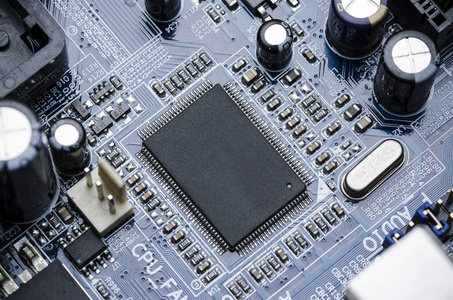Things to note when training supercapacitor structure product
Things to Note When Training Supercapacitor Structure Products
I. Introduction
Supercapacitors, also known as ultracapacitors or electrochemical capacitors, are energy storage devices that bridge the gap between traditional capacitors and batteries. They are characterized by their ability to store and release energy rapidly, making them ideal for applications requiring quick bursts of power. The structure of a supercapacitor plays a crucial role in its performance, influencing factors such as energy density, power density, and cycle life. This blog post aims to provide insights and considerations for training supercapacitor structure products, focusing on the fundamental aspects of supercapacitor technology, design factors, training methodologies, challenges, and future trends.
II. Understanding Supercapacitor Basics
A. Overview of Supercapacitor Technology
Supercapacitors can be categorized into three main types: electric double-layer capacitors (EDLCs), pseudocapacitors, and hybrid capacitors. EDLCs store energy through the electrostatic separation of charges at the interface between the electrode and electrolyte, while pseudocapacitors utilize fast redox reactions to store energy. Hybrid capacitors combine features of both EDLCs and batteries, offering a balance between energy and power density.
Key components of supercapacitors include electrodes, electrolytes, and separators. The electrodes are typically made from materials with high surface areas, such as activated carbon, which enhances capacitance. The electrolyte, which can be aqueous or non-aqueous, facilitates ion transport between the electrodes. Separators are crucial for preventing short circuits while allowing ions to pass through.
B. Comparison with Traditional Capacitors and Batteries
Unlike traditional capacitors, which store energy electrostatically, supercapacitors can store significantly more energy due to their larger surface area and the use of electrolytes. Compared to batteries, supercapacitors can charge and discharge much faster, making them suitable for applications requiring rapid energy delivery. However, they generally have lower energy density than batteries, which limits their use in long-term energy storage applications.
C. Applications of Supercapacitors in Various Industries
Supercapacitors find applications across a wide range of industries, including automotive, renewable energy, consumer electronics, and industrial systems. In electric vehicles, they provide quick bursts of power for acceleration and regenerative braking. In renewable energy systems, they help stabilize power output from intermittent sources like solar and wind. Their ability to deliver high power in short durations makes them ideal for applications in portable electronics, such as smartphones and laptops.
III. Key Factors in Supercapacitor Structure Design
A. Electrode Materials
The choice of electrode materials is critical in determining the performance of supercapacitors. Common materials include carbon-based substances, metal oxides, and conducting polymers. Carbon-based materials, such as activated carbon, are favored for their high surface area and conductivity. Metal oxides, like manganese oxide, can enhance capacitance through pseudocapacitance, while conducting polymers offer flexibility and tunable properties.
The surface area and porosity of the electrode materials significantly impact capacitance. A higher surface area allows for more charge storage, while optimal porosity ensures efficient ion transport.
B. Electrolyte Selection
The selection of electrolytes is another vital aspect of supercapacitor design. Aqueous electrolytes, such as potassium hydroxide, are commonly used due to their high ionic conductivity and safety. However, they typically have a lower voltage window compared to non-aqueous electrolytes, which can lead to higher energy densities. Non-aqueous electrolytes, such as organic solvents, can operate at higher voltages but may pose safety and stability concerns.
Conductivity and stability are key considerations when selecting electrolytes. A good electrolyte should facilitate efficient ion transport while maintaining stability over the operational lifespan of the supercapacitor.
C. Separator Role
Separators play a crucial role in supercapacitor performance by providing electrical insulation between the electrodes while allowing ions to pass through. The choice of separator material can affect ion transport rates and overall device performance. Common materials include polymer membranes and ceramic separators, each with its own advantages and disadvantages.
The separator's thickness and porosity can also influence the internal resistance of the supercapacitor, impacting its efficiency and power delivery capabilities.
IV. Training Methodologies for Supercapacitor Structure Products
A. Simulation and Modeling Techniques
Training supercapacitor structure products involves various methodologies, including simulation and modeling techniques. Finite element analysis (FEA) is commonly used to simulate the electrochemical behavior of supercapacitors, allowing researchers to predict performance under different conditions. Computational fluid dynamics (CFD) can also be employed to analyze ion transport within the electrolyte, providing insights into optimizing design parameters.
B. Experimental Approaches
Experimental approaches are essential for validating simulation results and understanding real-world performance. Prototyping and testing allow researchers to evaluate the performance of different materials and designs. Key performance metrics include energy density, power density, and cycle life, which are critical for assessing the viability of supercapacitor products.
C. Data Analysis and Machine Learning
Data analysis plays a significant role in optimizing supercapacitor structures. By utilizing data from experiments and simulations, researchers can develop predictive models that inform design choices. Machine learning algorithms can be employed to identify patterns and correlations in the data, enabling the optimization of materials and structures for enhanced performance.
V. Challenges in Supercapacitor Structure Training
A. Material Limitations
One of the primary challenges in supercapacitor structure training is the inherent trade-offs between energy density and power density. While increasing surface area can enhance capacitance, it may also lead to increased internal resistance, affecting power delivery. Additionally, material stability and degradation over time can pose significant challenges, particularly in demanding applications.
B. Environmental Considerations
As the demand for sustainable energy solutions grows, environmental considerations become increasingly important. The sustainability of materials used in supercapacitors, as well as their recyclability and end-of-life management, must be addressed to minimize environmental impact.
C. Cost Implications
Balancing performance with manufacturing costs is a critical challenge in the development of supercapacitor products. Advanced materials and manufacturing techniques may offer improved performance but can also drive up costs, impacting the economic viability of the final product.
VI. Future Trends in Supercapacitor Structure Development
A. Innovations in Materials Science
The future of supercapacitor technology lies in innovations in materials science. Nanomaterials, such as graphene and carbon nanotubes, hold great promise for enhancing performance due to their exceptional electrical properties and high surface areas. Additionally, the development of biodegradable and sustainable materials can address environmental concerns while maintaining performance.
B. Integration with Other Technologies
The integration of supercapacitors with other technologies, such as batteries, is an emerging trend. Hybrid systems that combine the strengths of both technologies can offer improved performance for applications in electric vehicles and renewable energy systems. Supercapacitors can provide rapid power delivery, while batteries can handle long-term energy storage.
C. Market Trends and Demand
The market for supercapacitors is expected to grow significantly, driven by the increasing demand for electric vehicles, portable electronics, and grid storage solutions. As industries continue to seek efficient energy storage solutions, supercapacitors will play a vital role in the transition to sustainable energy systems.
VII. Conclusion
In conclusion, the training of supercapacitor structure products involves a multifaceted approach that encompasses understanding the fundamentals of supercapacitor technology, key design factors, training methodologies, and the challenges faced in development. Ongoing research and development are essential to address these challenges and drive innovation in the field. Industry stakeholders are encouraged to invest in training and innovation to harness the full potential of supercapacitors and contribute to a sustainable energy future.
VIII. References
1. Academic papers and journals on supercapacitor technology and materials science.
2. Industry reports and white papers detailing market trends and applications.
3. Relevant books and online resources for further reading on supercapacitor design and training methodologies.
This comprehensive overview provides a structured understanding of the considerations involved in training supercapacitor structure products, highlighting the importance of ongoing research and innovation in this rapidly evolving field.






